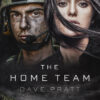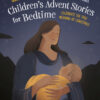It is poignantly fitting that National Alzheimer’s Awareness Month occurs in the same month as one of our most memorable holidays – Thanksgiving Day. Alzheimer’s is a disease that robs people of their memories. Thanksgiving Day is an occasion when people gather to celebrate, give thanks, and weave conversation from past to present to future memories. Photos, videos, and audio recordings will be made during the festivities. And some of these will make their way sometime in the future into the lap of someone who once participated and remembered, but now needs to be gently coaxed to even recognize the people, frozen in time, smiling up at them from a photo album.
As authors, we use our memories all the time. Even if the stories we write have nothing to do with what we’ve experienced in the past, we call upon certain elements of our lives to flesh out and inform our work. And it is here that my CAN blog for this month focuses. How do you capture things and people, places and events as you experience them? How do you recall them? Are they now as they were then? Or, has time colored them differently or your experience from then to now given you fresh perspective.
One example of the fragility of memory came, for me, rather unexpectedly (and humorously). Years ago, when sack lunches were PB&J and chips, there were those cupcakes. Ah, you know what I mean. Those chocolate cake, chocolate frosting-with-a-swirl-of white cupcakes that made sitting through boring classes worthwhile.
When news came months ago that those cupcakes would disappear from store shelves, many were devastated. But, they returned – to great fanfare and acclaim. So it was that I found myself scouting store shelves for those cakey, sweet treats of "yesteryear." And, I found them! But were they the same as before? Alas, no.
Or, perhaps they were the same, but I had changed. Adult now, and very conscious of eating healthfully, instead of ripping open the package and digging in, the first thing I did was locate the label – calories, sugars, carbs…yup. Then, I secured a napkin and contemplated a fork, not eager to make a mess on the placemats I’d just laundered. Only then did I nibble on the cake. The taste was there, and the delicious combination of frosting, creamy center, and cake. But I have to say that my inner grown up had squelched a bit of the inner child by approaching the grand moment as I did.
We might do the same thing when we re-read our journals, revisit old pictures, or try to get a sense of an historic venue or person. That is, what we remember might change a little, twist and bend a little, because we are approaching the memory not with the eyes of fresh experience, but with the years – and events – that have washed like waves on the sand. Something is bound to have faded or disappeared, but something new is in its place.
In a work of fiction, part of individualizing characters means understanding their present and their past – and what memories they carry with them that influence and inspire them. Another layer to this is to understand whether they remember things exactly as they happened, or do they skew them a bit because of who they are in the present? Differences in memory can certainly flame conflict, especially if a character insists that someone did something or something happened one way, when it actually happened another.
The things a character remembers can tell much about who he or she is. Do they remember colors over shapes? Character over mannerisms? Do they forget eye color, but remember how someone smiles or waves?
For many, the holidays, particularly Christmas, are rich with inspiration. Throughout these next few weeks, when you put on a writer’s "cap" and marvel at how many new elements you have to put into your work, think a bit, too, about how you will remember, and what you feel is most important, in your heart, to never forget.
Blessings and a very happy Thanksgiving!
Maureen
www.maureenpratt.com
http://blog.beliefnet.com/gooddaysbaddays/


